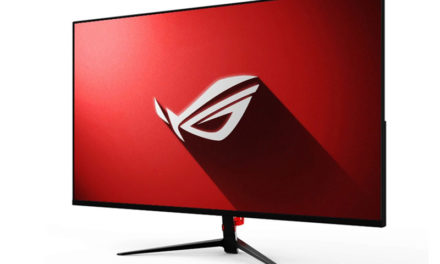
How to choose the right screen for your photographic and graphic work

With monitor sizes, resolutions, aspect ratios, panel technologies and color support, and a plethora of store shelves, it is a difficult task for professional users to select the most suitable monitor for their photographic and graphic work. MMD, the licensing partner for Philips monitors, will help you highlight some important points!

The first, critical point: color. In a professional environment, the colors that appear on the screen should be as close as possible to the colors that appear on other devices (such as printers). Therefore, accurate color reproduction is very important. It may sound incredible, but the 16,7 million colors that standard screens can typically display isn’t enough for professional graphics and photography applications. Monitors suitable for such work must have a wide color range and excellent calibration. Here are some terms you will come across:
- The sRGB color space is the minimum;
- Adobe RGB has a wider color gamut than sRGB, which is practically the industry standard. A professional screen must accurately reproduce at least 90% (or more) of the colors in this color space;
- Another standard for color space is the NTSC color range - 72% NTSC 1 = 99% sRGB 2. Therefore, a screen with a color rendering higher than the standard 72% NTSC will display even more vivid and lifelike colors. For example, most newer Philips monitors have technologies that test colors between 85% NTSC (122,9% sRGB) and 104% NTSC (130% sRGB).

Another factor to consider is monitor size and aspect ratio:
- A larger screen contributes significantly to the quality of creative, comparative, or multitasking work. Screens smaller than 27 inches simply do not meet the real needs of photographers or graphic designers. Most of all, the 32-inch and even 40-inch screens are suitable for this purpose, they already provide enough space for quality work.
- The aspect ratio must also be taken into account. 16: 9 wide screens are now standard, but many designers prefer the 16:10 aspect ratio because it offers enough space not only horizontally but also vertically. This requires less neck and eye movement for proper overview and can be adjusted proportionally to standard print sizes.
- The choice of resolution is no longer so clear, this should be considered along with the size of the screen. Is full HD enough? Or should I choose Quad HD or even 4K resolution? The resolution of the QHD screen is 2560 x 1440 pixels, as opposed to 1920 × 1080 pixels provided by full HD. The larger the screen, the higher the resolution should be. Since photographers and designers are looking for screens of 27 inches or larger, it makes sense to opt for higher resolutions, at least QHD.

If you want even bigger, consider the 4K screen (3840 x 2160 pixels), whose popularity is growing rapidly. This offers an even higher pixel density, allowing you to magnify even the finest details. Because there are multiple pixels on a square-inch screen, each pixel remains invisible even at high magnifications. Premium category screens with a super-fine resolution of 40 inches are recommended for those who work with a split screen.
- The next important factor is panel technology. There are two widespread technologies that are great for graphics jobs: VA (vertical alignment) and IPS (in-plane switching). Both offer an equally extra wide, 178-degree viewing angle, allowing you to view the contents of the screen from almost any angle. There is a difference in color accuracy and consistent brightness, in which IPS panels are slightly better. In many newer VA panels, however, this is perfectly compensated by special color correction technologies, such as the Ultra Wide-Color technology on Philips models, which raises color accuracy to an excellent level. Moreover, the black colors and contrasts of VA panels are better than those of IPS panels, and their power consumption is generally lower.
- Flat or curved? It is already a matter of personal taste. The latest curved screens solidly enclose the user’s field of vision, allowing them to better focus on a specific task, which can be an important consideration in busy office environments. The curved screen can provide a greater sense of depth with minimal image distortion. But because distortion is undesirable, even minimal, users report choosing flat screens to create (rather than view) content. Depending on the space available on your desktop (and your budget), it may be a good idea to use an image screen: one flat and one curved.
Professional graphic artists are advised to focus primarily on key features, but also consider aspects such as ergonomic adjustability and proper connectivity. All of these play a role in making everyday work even more efficient.













